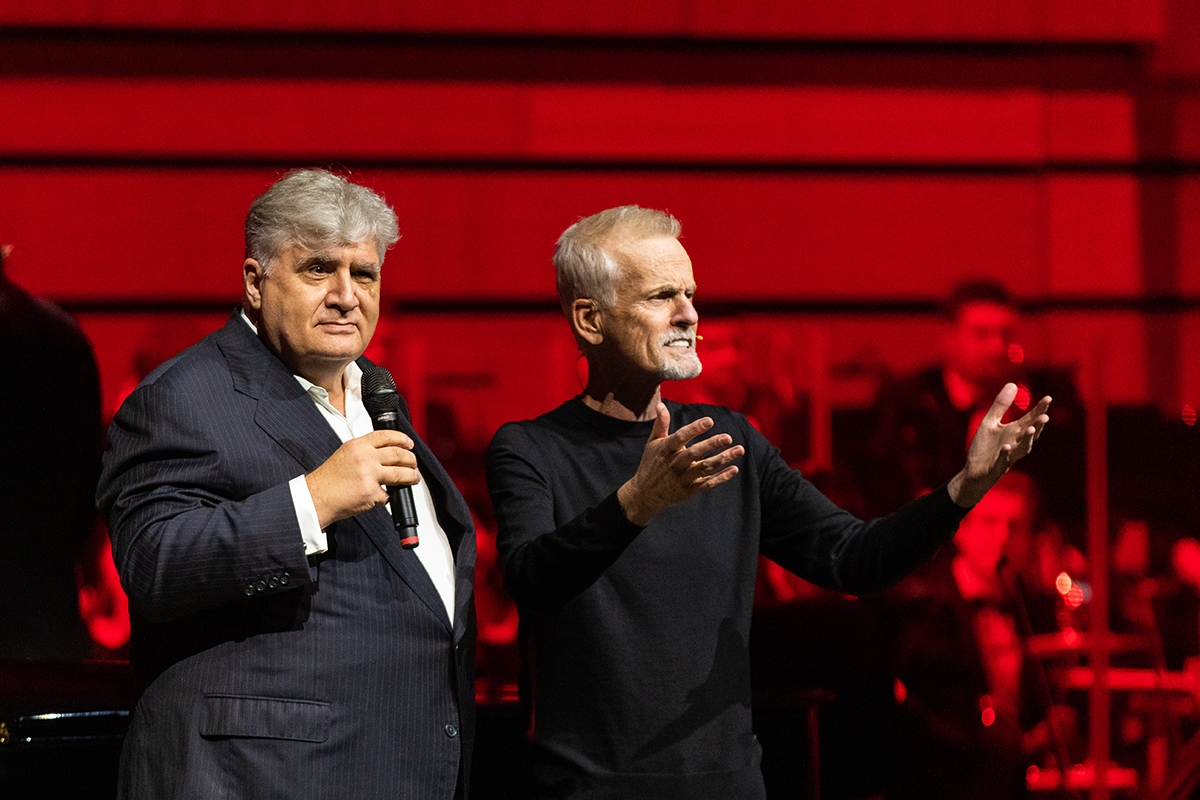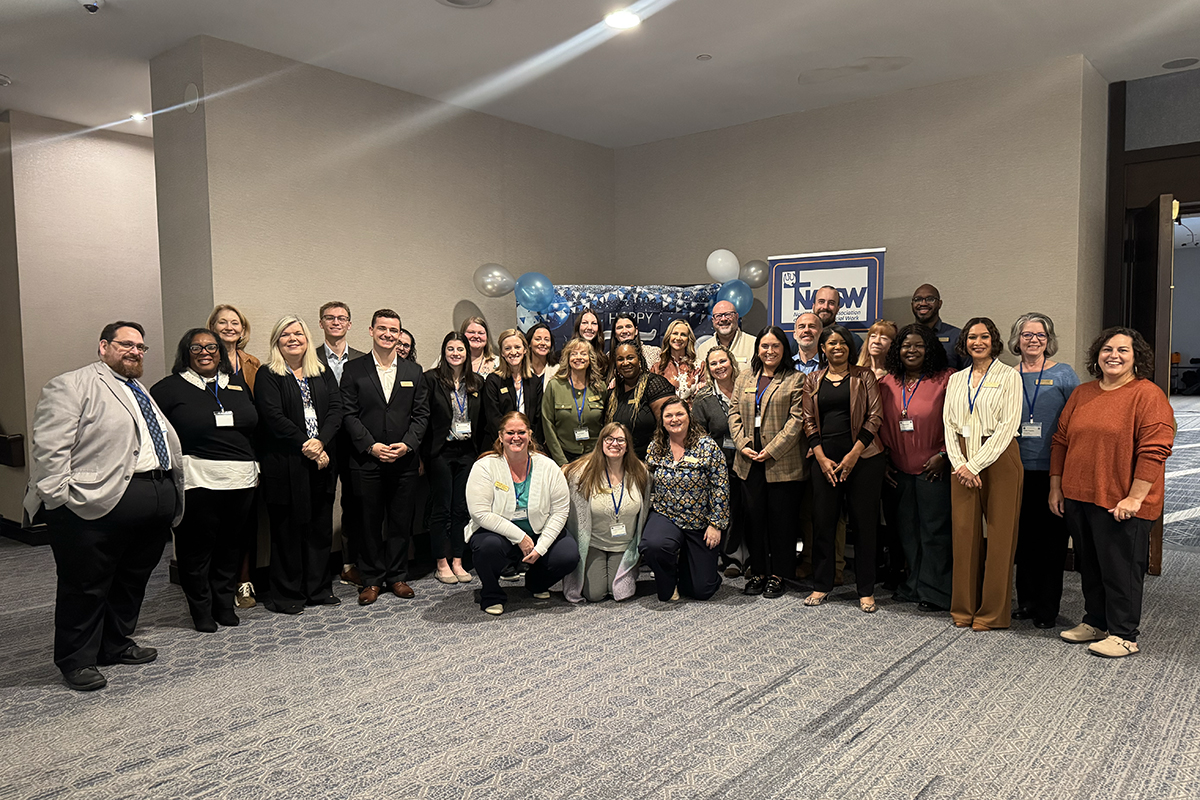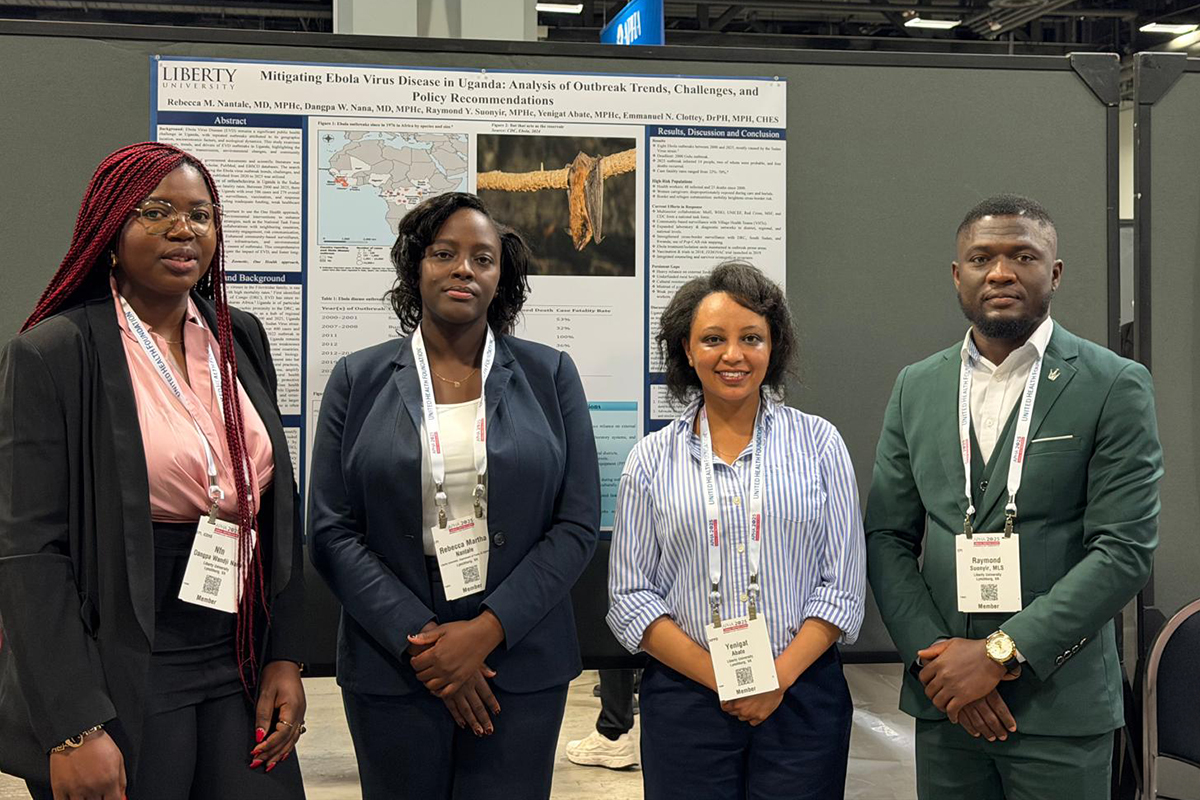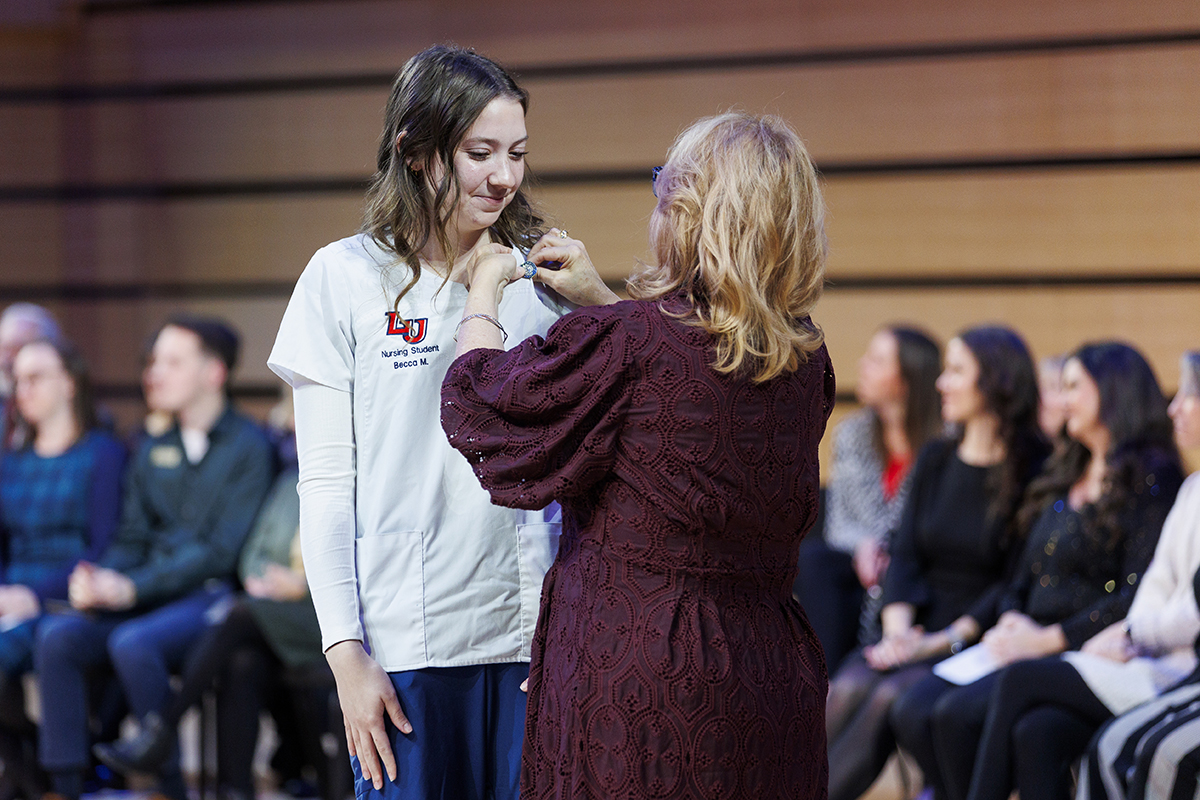The voices behind popular ‘Animaniacs,’ ‘Adventures in Odyssey’ characters share industry tips and the joys of creativity at Sonic-Con
October 26, 2021 : By Ryan Klinker - Office of Communications & Public Engagement

It’s one thing for aspiring voice actors and avid animated entertainment fans to admire talent on a TV screen or on the radio, but it’s another thing to witness the voices of Animaniacs’ “Pinky and the Brain” or the characters from “Adventures in Odyssey” having conversations right in front of them.
This year marked the second time Liberty has brought industry professionals and fans alike to Sonic-Con, a national audio theatre convention. This past weekend, special guests spoke on the wide-ranging world of audio storytelling, including voice actors Rob Paulsen and Maurice LaMarche and composer Randy Rogel from Warner Brothers’ “Animaniacs;” Phil Lollar, creator of “Adventures in Odyssey” and voice actors from the show, Katie Leigh and Kimmy Robertson; and Nickelodeon show creator and animator Butch Hartman (“The Fairly OddParents” and “Danny Phantom”).
Attendees were also treated to an “Animaniacs in Concert” on Oct. 23 in the Center for Music and the Worship Arts Concert Hall, individual masterclasses on the art of voice acting; “listening lounges” for enjoying audio entertainment pieces; and a new works festival, panel discussions, live audio performances, and fun voice competitions.
In masterclasses, “Adventures in Odyssey” actors Leigh (voice of Connie Kendall) and Robertson (voice of Penny Wise) and the trio from “Animaniacs” explained how to create a character’s voice, discussed their career paths, and shared ways that aspiring performers can navigate the industry to find success and joy in their work.
Crafting the identity of characters is not as easy as talking into a microphone, Leigh and Robertson pointed out. Voice acting is like a sport, they said; it requires movement too — being “animated” in order to bring life to a scene.
“We don’t do anything in voiceover that doesn’t include our entire body,” Leigh said. “Animation is the state of bringing life or vigor, so whether it’s a cartoon or radio, we still bring life to what’s happening. Voices aren’t just voices; they are characters, personalities, and beings with full-dimensional feelings.”

Leigh explained that building a character involves taking in every bit of detail one can find, including the setting, descriptions, and directions in the script and (if available) a drawing of the character. Asking questions like “Where are they from?” “How old are they?” and “What physical traits do they have?” can unlock ideas of how to voice a new character. Actors can work with pitch, vocal placement, an affect (like an accent or lisp), nonverbal noises, speech pace, volume, and energy level.
“I tell people that it’s like putting on the costume of this character, but not just physical; it’s the costume of their emotional life and how they see the world,” she said. “When you play a character, you want to feel their physicality. You want to look at (their facial features) and put on their mask while you talk.”
“You have to get it out of your head that there is one right way; you have to bring your own way,” she added. “Own what you see in the character and put it out there. Allow your imagination to play with all of the possibilities. Don’t just limit yourself to what’s on the page.”
Convention-goers got to try their hand at voicing an animated character with Leigh and Robertson, producing some fun results.
Paulsen, the voice of Yakko and Pinky from “Animaniacs”, shared advice on how to pursue an entertainment career and fuel one’s creative desires.
“We knew (the show) was going to be a big deal because it was (produced by) Steven Spielberg, and also because there would be music every half-hour, and as a singer to be able to do that with a 40-piece orchestra … I felt so lucky,” Paulsen said. “But that’s an axiom that all of you young actors should know: luck is when opportunity meets preparation. I had a glorious opportunity to show off what I can do. Don’t limit yourselves. Try everything, because you never know when you’re going to be put in the position to get lucky and start something you didn’t expect.”
“You’ve got this glorious opportunity with world-class facilities and world-class instructors (at Liberty), so take advantage of every opportunity to try everything,” he told the students in the audience.
Paulsen also noted the cooperative spirit required of voice actors.
“We like to say that we are blue-collar workers in the dream factory,” he said. “We are not movie stars; the characters are famous. We don’t draw them, we don’t write them. It is a deeply collaborative effort in all of the entertainment industry.”
Rogel, a graduate of West Point who spent time as a military officer, moved to Los Angeles after his military service and slept on a friend’s couch while he began writing scripts as a way to break into the entertainment industry. He originally wanted to become an actor, but his scripts began taking off. His now-famous “Nations of the World” song was his audition piece for “Animaniacs.”
“You’ll find that there is something you do well, and that’s the direction in which you should go,” Rogel said. “Know who you are, know how others see you and how (agents and directors) can sell you, and that’s what gets you a career. And from there, you can branch off as well.”


